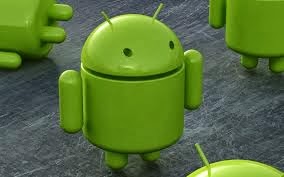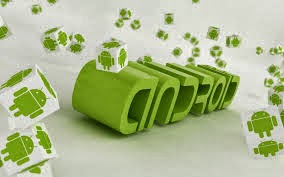1. Home Renovation (customized launcher)
 When you swipe to open your Android device and look at your home
screen, are you happy with what you see? Are there things you wish you
could change about the look and feel? One of Android’s main selling
points is customization, but if the device’s style isn’t suiting you,
you may think it is pretty limited.
When you swipe to open your Android device and look at your home
screen, are you happy with what you see? Are there things you wish you
could change about the look and feel? One of Android’s main selling
points is customization, but if the device’s style isn’t suiting you,
you may think it is pretty limited.What you may not realize, though, is that the Android home-screen, lock screen, and app drawer can all be replaced easily. The Google Play Store offers a wide-range of alternatives to custom fit your taste and needs.
Nova Launcher, one of the most popular options for tweaking the Android experience, gives you control over virtually every detail. But if you are looking for simplicity and style, you might try Chameleon Launcher, MIHome, or the soon-to-be-released Aviate app.
2. Quick-Draw (smart widgets)
Widgets are a unique feature for Android. These helpful tools deliver information, updates, and app-specific data right to your home-screen in a stylish, interactive display. This way, you can get what you need quickly, without launching a separate app. Many apps that you download from the Google Play Store come with
widgets built in to them. But if you wish you had a widget that doesn’t
seem to exist, you can also make it for yourself! User-friendly tools
such as UCCW (ultimate custom widget) will allow you to design almost anything you can dream up with just a few steps. You don’t even have to know code!
Many apps that you download from the Google Play Store come with
widgets built in to them. But if you wish you had a widget that doesn’t
seem to exist, you can also make it for yourself! User-friendly tools
such as UCCW (ultimate custom widget) will allow you to design almost anything you can dream up with just a few steps. You don’t even have to know code!Some savvy graphic designers even make money selling their own pre-made widgets for the UCCW app. Anyone with good design sensibilities and a publishing account on the Google Play Store can do the same. If this interests you, all you really need is some inspiration and some basic design skills, which you can easily learn in this graphic design course.
3. Presto Change-O (quick navigation)
Early versions of Android were task-management challenged. If you wanted to switch apps, you had to press the home key and navigate all the way through from there. There was no way to switch between apps you already had open.This has become much easier in Android 4.0 (Ice Cream Sandwich) and later versions. There is now an app switching key built in to most devices. But if you really want to pick up speed, you can do even better.
 Independent android developers have devised some very clever approaches to quick navigation on your device. Sidebar, Homeflip, Glovebox, and SwipePad
all offer unique options for setting up quick navigation that you
wouldn’t think was possible on your device. Each of the apps is unique
and worth a try. Give them all a spin to find out what works best for
you.
Independent android developers have devised some very clever approaches to quick navigation on your device. Sidebar, Homeflip, Glovebox, and SwipePad
all offer unique options for setting up quick navigation that you
wouldn’t think was possible on your device. Each of the apps is unique
and worth a try. Give them all a spin to find out what works best for
you.4. The Hidden Hand (task automation)
Are there things you want your phone to do automatically? For instance, when you plug in your headphones, do you wish your favorite music app would come up? Do you forget to turn wi-fi on when you get home and wish your device would remember to do it for you?These are just two examples of many automations you can accomplish using Tasker. A long-time favorite of tech enthusiasts and productivity champs everywhere, the Tasker app lets you make mini-programs that carry out tasks you would otherwise need to do manually. Limited only by the user’s comfort and skill level, Tasker’s ability to “get it done for you” is truly remarkable.
Once you install the app, you can easily find templates online to start making simple tasks. But if you really find yourself drawn to creating intricate tasks, you may want to learn some programming fundamentals. As an aside: apart from allowing you to save time by building Android automations, the skills you will learn in a basic programming course will help you approach real-life problems methodically and logically. It has immense general applicability.
5. The Do-It-Yourself (easy app-making)
 A great thing about Android is that it is relatively easy to create
and publish your own apps on the platform. If you have a great idea for
an app and no clue how to make it, here is some good news: some
code-free software will let you get it done today! For free! And if you
want a jump-start, there is even a course to get you up and running on Android in no time.
A great thing about Android is that it is relatively easy to create
and publish your own apps on the platform. If you have a great idea for
an app and no clue how to make it, here is some good news: some
code-free software will let you get it done today! For free! And if you
want a jump-start, there is even a course to get you up and running on Android in no time.If you find you enjoy working with Android, and you do learn a little code, you open up many more possibilities to turn your ideas into apps. There is always something to learn, even for advanced programmers, but getting started may be much easier than you think. You can get there in very little time with the help of a comprehensive online course in Android programming.
Hopefully, these Android tricks will get you on the path to discovering the potential of Android and possibly even building on it. Google and third party developers are always unveiling new ideas and technologies, sometimes with the grandeur of a modern magic trick and sometimes with the simple promise of a few minutes saved. Either way, it is an exciting and promising world, and it is right there at the end of your stylus.










